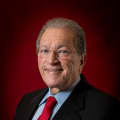A type of arthritis that primarily affects the joints of the spine, ankylosing spondylitis begins with inflammation at the points where tendons and ligaments attach to bone.
The effects of ankylosing spondylitis are cumulative as inflammation causes vertebral bone erosion, tissue scarring, and worsening symptoms. This process can eventually lead to new bone formation and spinal joint fusion.
Lower back pain that gets worse with rest and radiates down the buttock and thigh is a typical early symptom of ankylosing spondylitis.
See Ankylosing Spondylitis Causes and Risk Factors
In This Article:
- Development and Progression of Ankylosing Spondylitis
- Progression of Ankylosing Spondylitis in the Spine
- Ankylosing Spondylitis Video
How Ankylosing Spondylitis Affects Joints
Ankylosing spondylitis is a condition that affects mainly the fibrous tissue junctions where ligaments and tendons attach to bone, called entheses. Entheses are also referred to as insertion sites, osteotendinous junctions, or osteoligamentous junctions.1Benjamin M, Toumi H, Ralphs JR, Bydder G, Best TM, Milz S. Where tendons and ligaments meet bone: attachment sites ('entheses') in relation to exercise and/or mechanical load. J Anat. 2006;208(4):471-90. There are two types of entheses:
- Fibrous entheses, in which the fibrous tissue of the tendon or ligament attaches to the bone.
- Fibrocartilaginous entheses, in which the connection between tendon or ligament and bone is augmented with fibrocartilage. The stiff fibrocartilage helps absorb some of the physical stress experienced at these connections.
Inflammation most often occurs in fibrocartilaginous entheses,2McGonagle M, Benjamin M. Entheses, enthesitis, and enthesopathy. Topical Reviews. 2009 6(4). and this inflammation is called enthesitis.
Enthesitis is the first stage of ankylosing spondylitis development, and it sets into motion a cascade of changes in the surrounding bone and soft tissue:
- Inflammation of the entheses (enthesitis) causes erosion of bone at the point of contact
- Calcification (extra bone growth) occurs as a natural response to the erosion
- Scarring of the surrounding tissues (e.g., ligaments and tendons) can occur. Extra bone formation occurs in response to the scarring.
Left untreated, this cycle of inflammation, calcification, scarring, and bone formation can recur repeatedly, causing the pain and stiffness that characterize ankylosing spondylitis. The condition most commonly affects the joints in the spine.
In addition to spinal changes and symptoms, some people with ankylosing spondylitis may experience symptoms outside of the spine, including chronic inflammation of the heart and eyes, and/or reduced lung capacity due to poor chest movement and scarring. Because of the possibility of these symptoms, people with ankylosing spondylitis are encouraged to have a rheumatologist manage their ongoing treatment.
- 1 Benjamin M, Toumi H, Ralphs JR, Bydder G, Best TM, Milz S. Where tendons and ligaments meet bone: attachment sites ('entheses') in relation to exercise and/or mechanical load. J Anat. 2006;208(4):471-90.
- 2 McGonagle M, Benjamin M. Entheses, enthesitis, and enthesopathy. Topical Reviews. 2009 6(4).

